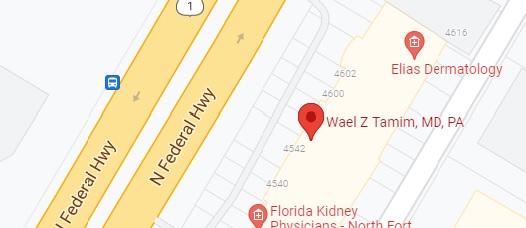What is Aortic Stenosis?
The heart pumps blood from the left ventricle to the body’s main artery called the aorta, which branches into other arteries that supply the entire body. Aortic stenosis, also known as aortic valve stenosis, is a condition characterized by an abnormal narrowing of the aortic valve at the junction between the heart and the aorta, thereby restricting blood flow to the aorta and the rest of the body. As a result, the heart works harder to pump blood, causing thickening of the left ventricle and weakness of the heart muscle. This can lead to heart failure and other serious conditions.
Causes of Aortic Stenosis
Factors that cause aortic stenosis include:
- Stiffening of the aortic valve due to aging and buildup of excess calcium
- Congenital heart defect such as a bicuspid aortic valve (having 2 cusps or flaps instead of 3)
- Rheumatic fever which can lead to scarring of the aortic valve
- Radiation therapy
Symptoms of Aortic Stenosis
Mild aortic stenosis may not produce any symptoms, while severe stenosis may be associated with:
- Chest pain
- Heart murmur or palpitations
- Breathing difficulty
- Decreased ability to exercise
- Fatigue
- Fainting
- Loss of appetite
- Swollen feet
- Visual problems
Diagnosis of Aortic Stenosis
Your cardiologist will enquire about your medical history, symptoms, current medications, diet, and lifestyle. A physical examination is performed and any abnormal heart sounds are noted. Your doctor may recommend the following diagnostic tests:
- Electrocardiogram (ECG): This test records the heart’s electrical activity on a graph.
- Chest X-rays: Chest radiography is performed to assess heart size, lung disorders, or detect tumors in the chest cavity. It can also show calcium buildup in the valves.
- Magnetic Resonance Imaging (MRI) Scan: An imaging study that uses a large magnetic field and radio waves to detect any damage to soft tissue structures such as heart valves.
- Computed Tomography (CT) Scan: This scan uses multiple x-rays to produce detailed cross-sectional images of the heart.
- Echocardiogram: This test uses ultrasound waves to create visual images of the heart muscles and valves.
- Transesophageal Echocardiography (TEE): Ultrasound waves are generated by a device inserted into the esophagus to produce clear images of the heart.
- Cardiac or treadmill stress test: This test is performed to determine the effects of exercise on the heart. It records the heart’s electrical activity while you run on a treadmill.
- Cardiac Catheterization and Biopsy: A narrow tube is passed through a blood vessel in the groin and guided up to the heart where a small tissue sample (biopsy) is taken for testing.
Treatment for Aortic Stenosis
Treatment for aortic stenosis may vary based on the root cause and severity of the condition. Your doctor will advise regular follow-up visits if you have mild symptoms. Common treatment measures include:
Medications:
Your doctor will prescribe certain medications to relieve symptoms and avert complications. Medications can help those with mild symptoms and those who have been advised against surgery. These include:
- Antibiotics: These help to avert or treat an infection that can cause heart damage.
- Anti-arrhythmics: These help to treat an abnormal heart rhythm.
- Blood pressure medications: Beta-blockers or calcium channel blockers can help to lower blood pressure, easing the load on the heart.
- Blood thinners: These inhibit clot formation and help increase blood flow.
Lifestyle modifications: These include:
- Following a healthy diet
- Reducing intake of salt and fat
- Exercising regularly
- Maintaining a healthy weight
- Avoiding smoking
- Managing stress
If medications and lifestyle changes fail to improve symptoms, one of the following surgeries may be recommended:
- Balloon Valvuloplasty: This minimally invasive procedure involves the insertion of a catheter with a balloon at its end into the blocked valve. The balloon is inflated once in place, widening the space and allowing more blood flow.
- Aortic Valve Repair: A less common procedure, the damaged aortic valve may require repair in order to treat aortic stenosis.
- Aortic Valve Replacement: This procedure is reserved for cases of severe aortic stenosis. The damaged valve is removed and replaced with a synthetic valve or a biological valve (from pig, cow, or human tissue).
- Transcatheter Aortic Valve Implantation (TAVI): This is a minimally invasive procedure in which a replacement valve is inserted through a catheter passed through a vessel in the leg or chest and guided to the heart.
Related Topics:
- Minimally Invasive Heart Surgery
- Atrial Fibrillation Corrective Surgery
- Percutaneous Mitral Valve Repair
- Removal of Masses or Tumors from the Heart
- Aortic Dissection
- Coronary Artery Bypass Grafting
- Aortic Valve Disease
- Aortic Stenosis
- Transcatheter Aortic Valve Replacement - TAVR
- Mitral and Aortic Valve Repair and Replacement
- Tricuspid Valve Disease
- Valvular Surgery


